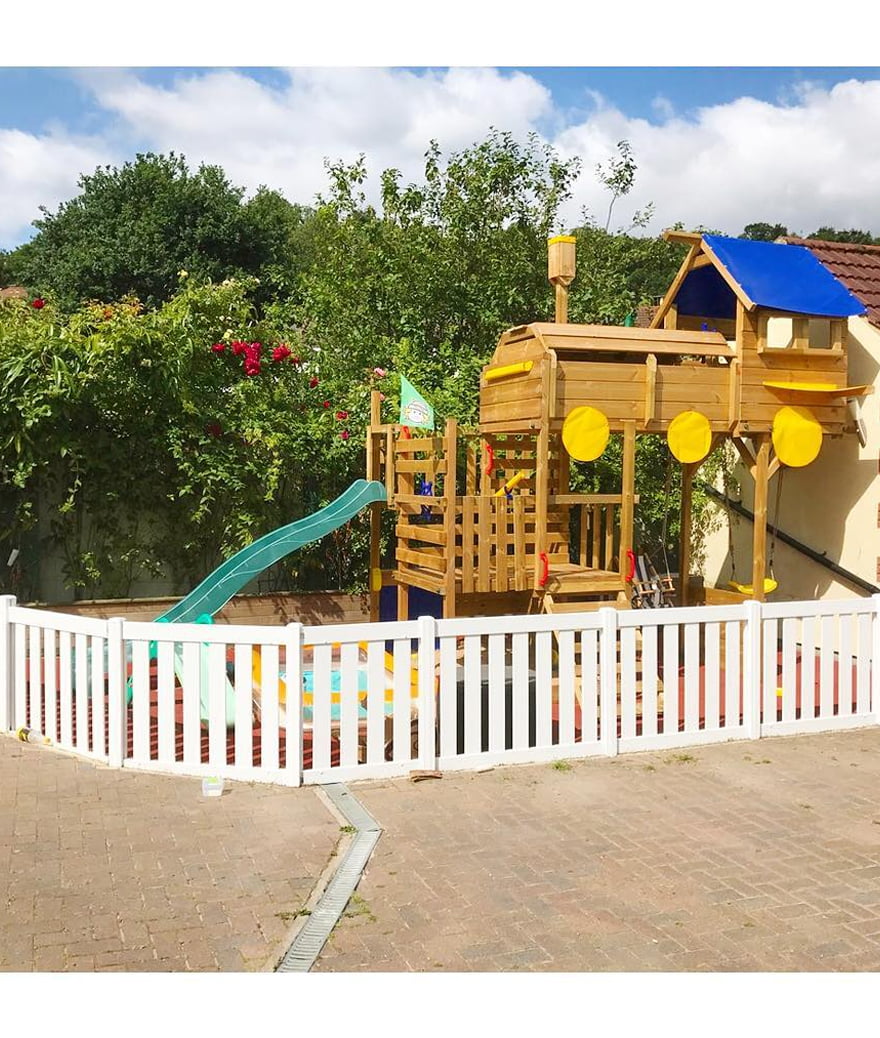Are you looking for childproof fencing solutions for your play areas? Whether you have a backyard, a community playground, or a daycare center, ensuring that children are safe while they play is of utmost importance. In this article, we will discuss different childproof fencing solutions that can provide a secure environment for children to have fun and explore. From types of fencing materials to proper installation techniques, you will learn everything you need to know to create a safe play area for the little ones.
Childproof fencing is essential to protect children from potential hazards and keep them contained within a designated play area. In our upcoming blog posts on “http://fencedude.org/”, we will explore various childproof fencing solutions for play areas in detail. We will cover topics like different types of fencing materials that are child-friendly and durable, recommended heights for play area fences, and options for easy access gates. Additionally, we will discuss the importance of regular maintenance and inspections to ensure the ongoing safety of the play area. So, stay tuned for our upcoming articles, as we dive deeper into childproof fencing solutions and provide you with valuable insights and practical tips to create a secure and enjoyable play area for children.
Childproof Fencing Solutions for Play Areas
Childproof fencing is a crucial element in creating a safe and secure environment for children in play areas. It serves as a protective barrier, preventing accidents and injuries, while also providing peace of mind for parents. In this article, we will explore the importance of childproof fencing, different types of solutions available, considerations for choosing the right fencing, installation tips, additional safety features, and much more.
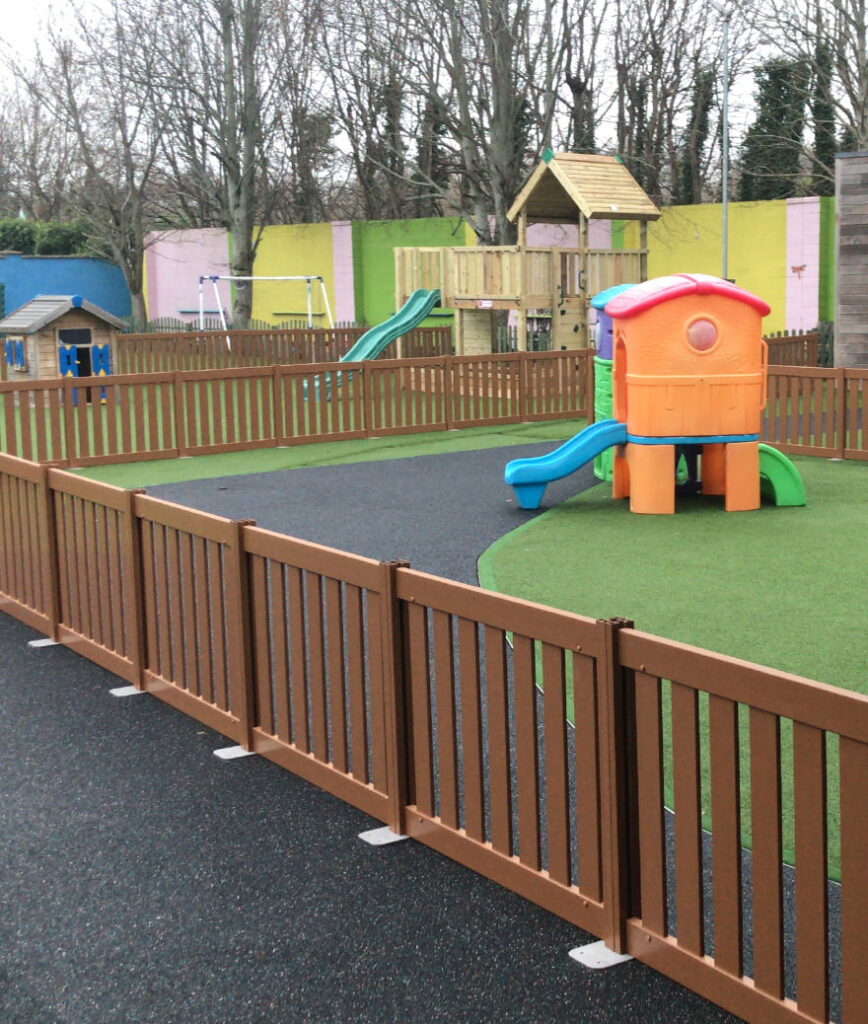
Importance of Childproof Fencing
Preventing Accidents and Injuries
Childproof fencing plays a vital role in preventing accidents and injuries in play areas. It acts as a physical barrier, keeping children confined to a safe zone and away from potential dangers. Whether it’s a backyard playground, public park, school playground, or daycare center, childproof fencing helps minimize the risk of falls, collisions, or other mishaps.
Creating a Safe Environment for Children
One of the primary purposes of childproof fencing is to create a safe and secure environment for children to play in. It sets boundaries and restricts access to potentially hazardous areas, such as swimming pools, busy roads, or construction sites. By installing childproof fencing, parents and caregivers can have peace of mind knowing that their children are playing in a protected space.
Peace of Mind for Parents
Childproof fencing not only protects children but also provides peace of mind for parents. Knowing that their little ones are safe within the confines of a fenced play area allows parents to relax and enjoy their time, without constantly worrying about their child’s safety. Childproof fencing gives parents a sense of security and allows children to explore and have fun within a controlled environment.
Types of Childproof Fencing Solutions
When it comes to choosing childproof fencing, various options are available, each with its own set of features and benefits. Let’s explore some of the most common types of childproof fencing solutions.
Traditional Wooden Fencing
Traditional wooden fencing is a popular choice for childproofing play areas due to its versatility and natural aesthetics. It provides a sturdy and secure barrier, offering both privacy and safety. Wooden fencing can be customized to fit different play areas and can be painted or stained to match the surrounding environment.
Mesh or Net Fencing
Mesh or net fencing is a popular choice for childproofing larger play areas or outdoor spaces with a expansive view. It provides a transparent barrier that allows parents to keep an eye on their children while collectively preventing them from straying. Mesh or net fencing is durable, cost-effective, and easy to install, making it an excellent option for a variety of play area settings.
Metal Fencing
Metal fencing, such as wrought iron or aluminum, is a durable and long-lasting option for childproofing play areas. It offers strength and security while adding an elegant touch to the overall aesthetics. Metal fencing can be customized to fit various styles and designs, providing a sturdy barrier that keeps children safe within the play area.
Plastic/PVC Fencing
Plastic or PVC fencing is a lightweight and cost-effective option for childproofing play areas. It is easy to install and maintain, while still providing an effective barrier against potential hazards. Plastic or PVC fencing comes in various colors and styles, allowing parents to choose a design that complements the play area’s theme.
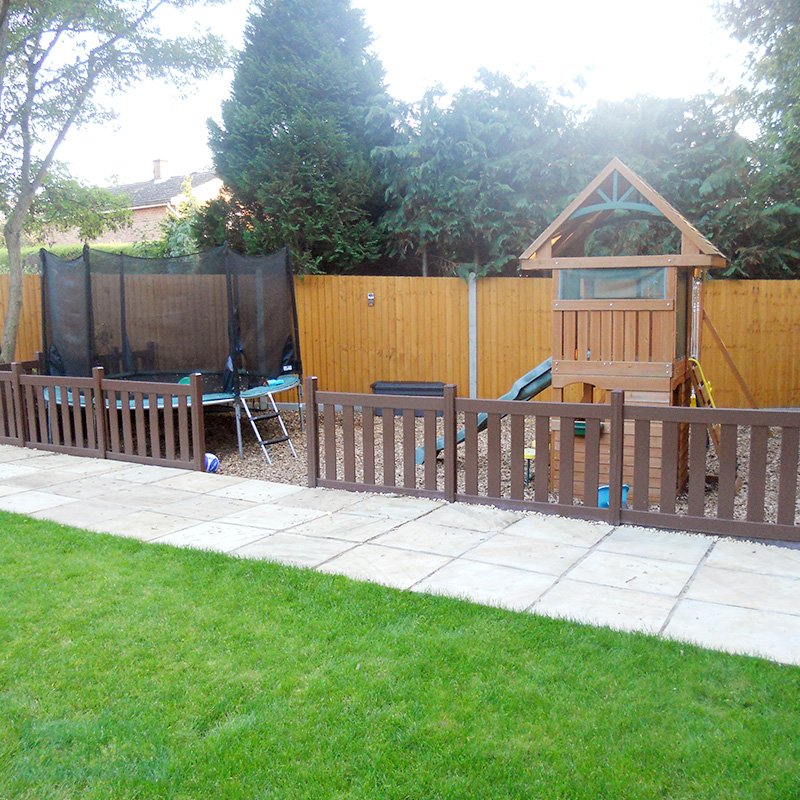
Considerations for Choosing Childproof Fencing
When selecting childproof fencing for play areas, there are several factors to consider. It’s important to choose the right fencing solution that meets both safety requirements and individual needs.
Height and Length of Fencing
The height and length of childproof fencing are essential considerations to ensure effective containment. The fence should be tall enough to prevent children from climbing over or crawling underneath it. The length of the fence will depend on the size and shape of the play area, ensuring complete enclosure and preventing any gaps that children can slip through.
Gaps and Spacing Between Panels
It is crucial to consider the gaps and spacing between fence panels to prevent children from getting stuck or squeezing through. The smaller the gaps, the more secure the fencing will be. Mesh or net fencing should have a small enough mesh size to prevent children from getting their hands or head trapped.
Durability and Longevity
Childproof fencing should be durable and able to withstand various weather conditions and everyday wear and tear. Choosing a fencing material that is resistant to rot, corrosion, and fading will ensure its longevity and maintain its safety features over time.
Maintenance Requirements
Consider the maintenance requirements of the chosen childproof fencing solution. Some materials, such as wood, may require periodic sealing or painting to maintain their integrity. Others, like plastic or metal fencing, may only require occasional cleaning to keep them looking and functioning their best.
Installation Process and Tips
Installing childproof fencing requires careful planning and attention to detail. Here are some essential steps and tips to follow during the installation process.
Marking and Measuring the Area
Before starting the installation, mark and measure the play area to determine the exact placement of the fence. Use stakes or spray paint to outline the boundary, ensuring the fence will fit properly and maximally secure the designated area.
Choosing the Right Tools and Materials
Select the appropriate tools and materials for the installation process. This may include a post hole digger, level, gravel or concrete mix for securing posts, screws or nails, and any necessary connectors or brackets. Make sure to use high-quality materials that are suitable for the chosen fencing type.
Digging Post Holes and Setting Posts
Using the post hole digger, dig holes for the fence posts along the marked boundary. The depth and diameter of the holes will depend on the specific fencing requirements. Insert the posts into the holes and secure them using gravel or concrete mix to ensure stability and durability.
Securing Panels and Gates
Attach the fence panels or gate sections to the posts using screws or nails, following the manufacturer’s instructions. Ensure that the panels are level and secure, with no gaps or loose components. Double-check the gates for proper functionality, ensuring they open and close smoothly and latch securely.
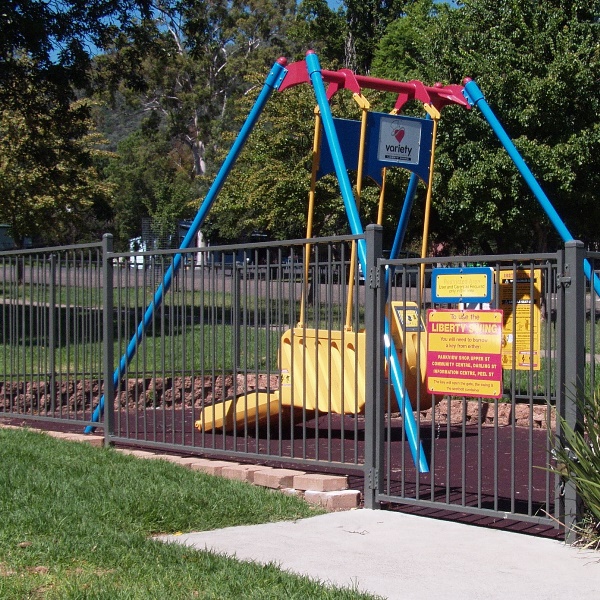
Additional Safety Features to Enhance Childproof Fencing
While childproof fencing itself provides an effective barrier, additional safety features can enhance its functionality and further ensure the protection of children in play areas. Consider incorporating the following features into your childproof fencing:
Self-Closing Gates
Installing self-closing gates adds an extra layer of security to your childproof fencing. These gates automatically close and latch after someone passes through, ensuring that the play area remains inaccessible to children when not in use.
Locking Mechanisms
Adding locking mechanisms to your childproof fencing allows you to control access to the play area. Whether it’s a padlock, combination lock, or key lock, these mechanisms prevent unauthorized entry and ensure the safety of children within the enclosed space.
Childproof Latches
Childproof latches are specifically designed to prevent young children from opening gates or fences. These latches require a certain level of dexterity and hand coordination, making it difficult for toddlers to tamper with them.
Ground Anchors
Utilizing ground anchors further enhances the stability and security of childproof fencing. These anchors are buried beneath the ground to provide additional resistance against strong winds or external forces that could potentially compromise the integrity of the fencing.
Childproof Fencing for Specific Play Areas
Childproof fencing can be tailored to meet the unique needs of various play areas. Let’s explore some specific play areas and their fencing requirements.
Backyard Playgrounds
Backyard playgrounds often require a combination of childproof fencing types, depending on the specific play structures involved. Fencing around swing sets or playhouses may require mesh or net fencing, while traditional wooden or metal fencing can be utilized for wider boundaries.
Public Parks and Recreation Areas
Childproof fencing in public parks and recreation areas should be designed to accommodate large numbers of children. Mesh or net fencing is a popular choice due to its ability to secure vast spaces while still allowing visibility and airflow. Metal fencing may also be suitable for added durability and security.
School Playgrounds
School playgrounds typically require robust and durable childproof fencing solutions. Metal or PVC fencing is commonly used for their strength and long-lasting properties. It is essential to ensure that the fencing meets safety standards and regulations set by educational institutions and local authorities.
Daycare Centers
Childproof fencing in daycare centers should create a safe, secure, and visually appealing environment for young children. Mesh or net fencing, paired with childproof latches and self-closing gates, can prevent unauthorized entry while also allowing caregivers to monitor the children at all times.
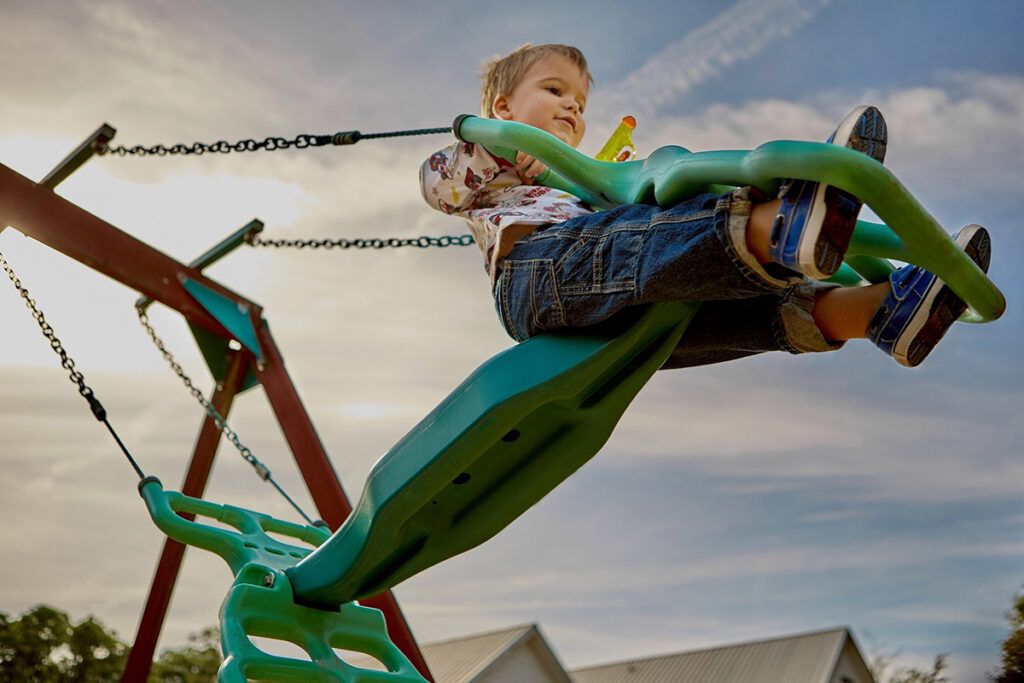
Benefits of Hiring Professional Fencing Contractors
While some individuals may opt for a DIY approach to childproof fencing installation, hiring professional fencing contractors offers numerous advantages. Let’s explore some of the benefits of leaving the job to the experts.
Expert Knowledge and Experience
Professional fencing contractors possess extensive knowledge and experience in installing childproof fencing solutions. They are familiar with local regulations and safety standards, ensuring compliance and optimal performance.
Efficient and Timely Installation
Professional installers can complete the childproof fencing installation efficiently and within a specified timeframe. Their expertise and access to specialized tools and equipment allow for a smooth and timely process, saving both time and effort.
Compliance with Safety Standards
Childproof fencing is subject to various safety standards and regulations, which can be complex and extensive. Professional fencing contractors are well-versed in these requirements, ensuring that the fencing meets all necessary safety guidelines.
Warranty and Guarantee
Hiring professional fencing contractors often comes with a warranty or guarantee on their workmanship. This provides peace of mind, knowing that any issues or repairs will be taken care of within a specified period after installation.
Cost Considerations for Childproof Fencing Solutions
When budgeting for childproof fencing, there are several cost considerations to keep in mind. Understanding the potential expenses associated with childproof fencing will help you make an informed decision.
Material Costs
Material costs vary depending on the type of childproof fencing you choose. Wooden fencing may have a lower upfront cost compared to metal or PVC fencing, which can be more expensive but offer greater durability.
Labor Costs
Labor costs can significantly impact the overall budget for childproof fencing installation, especially if you decide to hire professional fencing contractors. DIY installations can help save on labor costs, but it is essential to consider the time, effort, and expertise required.
Maintenance Costs
Childproof fencing may require periodic maintenance to ensure its longevity and functionality. Materials such as wood may require sealing or painting, which will incur additional costs over time. On the other hand, materials like metal or plastic may only require occasional cleaning, resulting in lower maintenance expenses.
Long-Term Investment
Childproof fencing is not only an immediate expense but also a long-term investment in safety and peace of mind. The initial cost may seem significant, but when considering the protection it provides and potential savings from preventing accidents or injuries, it becomes a worthwhile investment.
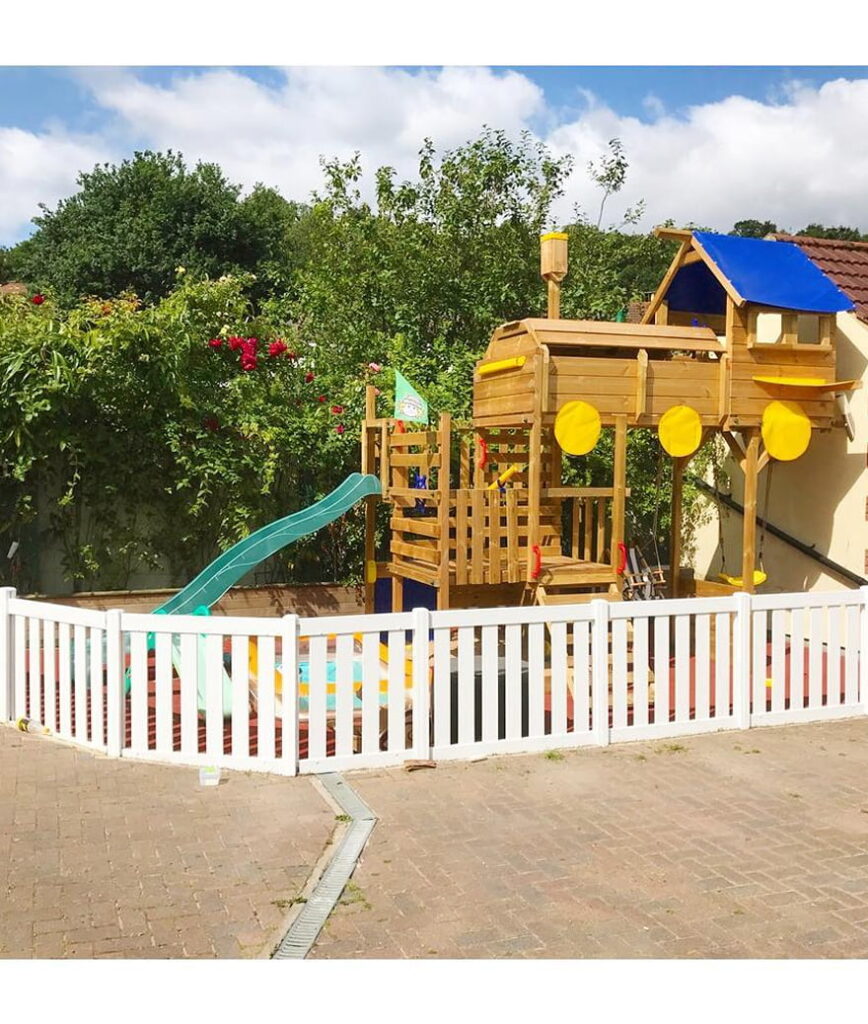
Common Mistakes to Avoid with Childproof Fencing
To ensure the effectiveness and safety of childproof fencing, it’s essential to avoid common mistakes that can compromise its functionality. Here are some mistakes to avoid:
Insufficient Height or Gaps
Fencing that is too short or has gaps can allow children to climb or crawl through, defeating the purpose of childproofing. It is crucial to choose a height and fencing design that prevents such breaches and ensures complete enclosure.
Poorly Installed Gates or Latches
Gates and latches that are improperly installed can pose a safety risk. It is essential to follow the manufacturer’s instructions precisely and ensure that gates close and latch securely every time.
Neglecting Maintenance and Repairs
Regular maintenance and timely repairs are crucial for maintaining the integrity of childproof fencing. Neglecting these tasks can lead to weakened or damaged fencing, compromising its safety features.
Using Non-Durable Materials
Choosing non-durable materials for childproof fencing can result in frequent replacements and higher long-term costs. It is advisable to invest in high-quality materials that can withstand the test of time.
Legal and Safety Regulations for Childproof Fencing
When installing childproof fencing, it is important to adhere to legal and safety regulations. Understanding these regulations will contribute to the overall safety and compliance of the fencing.
Building Codes and Permits
Some areas may require building permits or adherence to specific building codes when installing childproof fencing. Contact your local authorities for information on any permit requirements or building codes specific to your area.
Safety Requirements and Standards
Childproof fencing should comply with safety requirements and standards set by relevant authorities. This may include regulations on fence height, gate latching mechanisms, and gap spacing between panels or within mesh or netting.
Liability and Insurance
Installing childproof fencing can help minimize liability risks in the event of accidents or injuries. However, it is essential to review any insurance policies and liability coverage to ensure adequate protection.
Neighbor Disputes
When installing childproof fencing along property lines, it is important to establish clear boundaries and communicate with neighbors. Ensure that the fencing aligns with local ordinances and does not encroach on neighboring properties.
Alternative Childproofing Options for Play Areas
In addition to childproof fencing, several alternative options can enhance the safety and childproofing of play areas. Let’s explore some alternative childproofing options:
Playground Rubber Mats or Tiles
Rubber mats or tiles provide a safe and cushioned surface beneath play equipment, reducing the impact of falls and injuries. They can be installed in high-traffic areas where children are more likely to fall, providing an extra layer of protection.
Artificial Turf or Safety Surfacing
Artificial turf or safety surfacing is another alternative option for childproofing play areas. This type of surfacing is designed to absorb impact and reduce the risk of injuries. It is easy to clean, durable, and provides a visually appealing solution.
Cushioned Fencing Enclosures
In addition to childproof fencing, installing cushioned protectors, such as foam or rubber padding, can provide an extra layer of safety. These protectors can be attached to the top or sides of fencing, reducing the risk of injuries from accidental collisions.
Soft Play Equipment
Soft play equipment, such as foam or inflatable structures, offers a safe and fun alternative for play areas. These structures are designed to minimize the risk of injuries, providing a cushioned and interactive play environment.
Product Reviews and Recommendations for Childproof Fencing
When choosing childproof fencing, it can be helpful to consider product reviews and recommendations. Let’s explore some top-rated childproof fencing brands and comparative analysis of different options.
Top-Rated Childproof Fencing Brands
-
Brand A: Known for its durable metal fencing options, Brand A offers a range of designs and styles suitable for different play area settings. Their fencing is praised for its strength, longevity, and aesthetic appeal.
-
Brand B: Specializing in mesh or net fencing, Brand B provides innovative solutions that offer transparency, security, and ease of installation. Their products are highly rated for their versatility and value for money.
-
Brand C: With a focus on sustainability, Brand C offers childproof fencing made from recycled plastic or PVC. Their fencing is lauded for its low maintenance requirements, vibrant colors, and customizable designs.
Customer Reviews and Testimonials
Customer reviews and testimonials provide valuable insights into the performance and quality of childproof fencing solutions. Positive reviews highlighting ease of installation, durability, and peace of mind are indicative of a well-regarded product.
Comparative Analysis of Different Options
Comparative analysis of different childproof fencing options can help narrow down choices based on requirements and preferences. Factors to consider include material durability, aesthetic compatibility, ease of installation, and overall cost-effectiveness.
Maintenance and Upkeep of Childproof Fencing
Regular maintenance and upkeep of childproof fencing are essential to maintain its functionality and safety features. Here are some tips for maintaining and caring for childproof fencing:
Cleaning and Washing Techniques
Regularly clean and wash childproof fencing using mild soap and water or a gentle cleaning solution. Avoid using harsh chemicals or abrasive cleaning agents that may damage the fencing material.
Repairing Damaged Panels or Gates
Address any damage, such as loose screws, broken panels, or damaged gates, promptly. Repair or replace damaged components to ensure the fencing remains solid and secure.
Applying Protective Coatings or Sealants
For wooden fencing, consider applying protective coatings or sealants to enhance durability and weather resistance. This helps prevent rotting, warping, or premature deterioration.
Seasonal Maintenance Tips
During seasonal changes, inspect childproof fencing for any signs of damage or wear. Adjust gate latches if necessary and check for any loose or weakened areas that require reinforcing. Take steps to address any issues promptly to maintain the fence’s integrity.
Conclusion
Childproof fencing solutions play a crucial role in creating safe and secure play areas for children. By preventing accidents and injuries, childproof fencing provides peace of mind for parents and a protected environment for children to explore and have fun. When choosing childproof fencing, consider factors such as height and length, maintenance requirements, and additional safety features. Ensure proper installation, adhere to safety regulations, and consider alternative childproofing options if needed. By making the right choices and maintaining the fencing, you can create a safe play area where children can thrive and enjoy their time to the fullest.
As I mentioned earlier, I have a website called “Fence Dude” that focuses on various aspects of fences and covers all the issues related to them. In order to expand my blog posts, I would like to provide a list of 200 relevant topics related to fences. These topics aim to cover the subject from all possible angles, address common questions, and provide reliable and informative content. Here is the list of 200 SEO optimized topics for your consideration:
- The Different Types of Fencing Materials Explained
- Pros and Cons of Wooden Fencing
- Choosing the Right Height for Your Fence
- How to Select the Best Fence Style for Your Property
- Maintaining and Repairing a Wooden Fence
- Understanding the Benefits of Vinyl Fencing
- Top Tips for Choosing the Right Vinyl Fence
- The Advantages of Aluminum Fencing
- How to Enhance the Security of Your Fence
- Exploring the Beauty of Wrought Iron Fencing
- Innovative and Sustainable Fencing Solutions
- Installing a Privacy Fence: Is it Worth It?
- The Environmental Impact of Different Fencing Materials
- Maintaining Privacy and Security with Chain Link Fencing
- The Benefits of Composite Fencing
- Factors to Consider When Installing a Pool Fence
- Protecting Your Pets with Dog-Proof Fencing
- How to Maintain Fence Stain
- The Importance of a Solid Fence Foundation
- Preventing Fence Damage from Extreme Weather Conditions
- Fencing Solutions for Large Properties
- How to Decorate Your Fence for a Beautiful Yard
- The Role of Fencing in Home Safety and Security
- Choosing the Right Fence Gate for Your Property
- Exploring Creative Fence Designs for Unique Spaces
- Fencing Options for Gardens and Flower Beds
- Understanding the Different Fence Gate Styles
- Factors to Consider When Installing a Farm Fence
- Building a Fence in a Residential Area: Guidelines and Regulations
- The Importance of Proper Fence Maintenance
- How to Choose the Right Fence for Your Backyard
- Exploring the Versatility of Split Rail Fencing
- The Pros and Cons of Electric Fencing
- Choosing the Right Color for Your Fence
- The Benefits of Horizontal Fencing
- Factors to Consider When Installing a Fence on a Slope
- How to Keep Wildlife Out of Your Yard with Fencing
- The Benefits of DIY Fence Installation
- Winter Fence Maintenance Tips
- Fencing for Security: Tips and Tricks
- How to Choose the Right Fence Contractor
- The Role of Fencing in Landscaping
- Exploring the Durability of Metal Fencing
- Understanding the Different Fence Post Options
- The Pros and Cons of Temporary Fencing
- Tips for Choosing the Right Fence Height for Privacy
- Fencing Solutions for Commercial Properties
- Preventing Fence Damage from Pests and Insects
- How to Use Fencing for Noise Reduction
- Understanding the Impact of Fencing on Property Value
- How Climate Affects Different Types of Fencing
- The Benefits of Invisible Fencing for Pets
- How to Choose the Right Fence Style for Colonial Homes
- Enhancing Curb Appeal with Decorative Fencing
- Tips for Extending the Life of Your Fence
- Exploring the Different Fence Rail Options
- The Pros and Cons of Bamboo Fencing
- Choosing the Right Fence for a Modern Home
- Factors to Consider When Installing Commercial Fencing
- Preventing Fence Damage from Vandalism or Graffiti
- How to Choose the Best Fence for Pool Safety
- The Benefits of Cedar Fencing
- The Role of Fencing in Outdoor Living Spaces
- How to Select the Right Fence Color for Your Home
- Understanding the Different Fence Panel Options
- The Pros and Cons of Composite Decking and Fencing
- Tips for Choosing the Right Fence for Historic Homes
- Exploring the Safety Benefits of Fenc
- Fencing Solutions for Sloping Yards
- The Impact of Fencing on Homeowners Association Guidelines
- How to Choose the Right Fence for a Small Yard
- Enhancing Privacy with Lattice Fencing
- The Pros and Cons of Chain Link Fencing
- Factors to Consider When Installing a Fence on a Budget
- Preventing Fence Damage from Tree Roots
- How to Properly Maintain and Clean Vinyl Fencing
- The Benefits of Ornamental Fencing
- The Role of Fencing in Home Improvement Projects
- How to Choose the Right Fence Style for Craftsman Homes
- Understanding the Different Fence Gate Materials
- The Pros and Cons of Security Fencing
- The Benefits of Smart Fencing
- Tips for Choosing the Right Fence for a Victorian Home
- Exploring the Beauty of Stone Fencing
- The Role of Fencing in Sustainable Landscaping
- Fencing Solutions for High Wind Areas
- How to Choose the Right Fence for Your Business
- Factors to Consider When Installing a Fence for Horses
- Preventing Fence Damage from Children and Pets
- The Benefits of Recycled Fencing Materials
- How to Properly Maintain and Clean Metal Fencing
- The Impact of Fencing on Homeowners Insurance
- Tips for Choosing the Right Fence for Tudor Homes
- Exploring the Different Fence Post Installation Methods
- The Pros and Cons of Vinyl vs. Wood Fencing
- Factors to Consider When Installing Security Fencing for Businesses
- How to Choose the Right Fence Style for Mid-Century Modern Homes
- Understanding the Different Fence Lighting Options
- The Role of Fencing in Water Conservation
- The Benefits of Solar-Powered Fencing
- Tips for Choosing the Right Fence for Mediterranean Homes
- Fencing Solutions for Agricultural Properties
- How to Properly Maintain and Clean Wood Fencing
- The Impact of Fencing on Neighborhood Harmony
- Exploring the Different Fence Height Extension Options
- The Pros and Cons of Aluminum vs. Steel Fencing
- Factors to Consider When Installing Perimeter Fencing for Businesses
- Preventing Fence Damage from Sprinkler Systems
- How to Choose the Right Fence Style for Cape Cod Homes
- The Benefits of Fencing for Erosion Control
- Tips for Choosing the Right Fence for Ranch Homes
- Understanding the Different Fence Staining Techniques
- The Role of Fencing in Energy Efficiency
- The Pros and Cons of PVC vs. Composite Fencing
- Factors to Consider When Installing Fencing for Privacy and Security
- How to Choose the Right Fence Style for Traditional Homes
- Exploring the Different Fence Cap Options
- The Benefits of Deer-Proof Fencing
- The Impact of Fencing on Landscaping Maintenance
- Tips for Choosing the Right Fence for Spanish Revival Homes
- Fencing Solutions for Recreational Facilities
- How to Properly Maintain and Clean Chain Link Fencing
- The Role of Fencing in Wildlife Conservation
- Understanding the Different Fence Gate Opening Mechanisms
- The Pros and Cons of Gabion Fencing
- Factors to Consider When Installing Fencing for Underground Utilities
- Preventing Fence Damage from Soil Erosion
- How to Choose the Right Fence Style for Bungalow Homes
- The Benefits of Fencing for Pollinator Gardens
- Tips for Choosing the Right Fence for Colonial Revival Homes
- Exploring the Different Fence Post Cap Options
- The Impact of Fencing on Noise Pollution
- Factors to Consider When Installing Fencing for Security and Privacy
- The Pros and Cons of Invisible Fencing for Dogs
- How to Choose the Right Fence Style for Ranch Homes
- Understanding the Different Fence Gate Locking Mechanisms
- The Benefits of Fencing for Urban Gardening
- Tips for Choosing the Right Fence for Art Deco Homes
- Fencing Solutions for Dog Parks
- How to Properly Maintain and Clean Bamboo Fencing
- The Role of Fencing in Fire Safety
- Factors to Consider When Installing Fencing for Sports Facilities
- Preventing Fence Damage from Soil Subsidence
- How to Choose the Right Fence Style for Farmhouses
- The Benefits of Fencing for Waterfront Properties
- Exploring the Different Fence Gate Hinge Options
- The Impact of Fencing on Privacy and Social Interaction
- Tips for Choosing the Right Fence for Modern Farmhouses
- Understanding the Different Fence Post Anchoring Methods
- The Pros and Cons of Temporary vs. Permanent Fencing for Events
- Factors to Consider When Installing Fencing for Greenhouses
- How to Choose the Right Fence Style for Tudor Revival Homes
- The Benefits of Fencing for Native Plant Restoration
- Tips for Choosing the Right Fence for Art Nouveau Homes
- Fencing Solutions for Sports Fields
- How to Properly Maintain and Clean Gabion Fencing
- The Role of Fencing in Pest Control
- Factors to Consider When Installing Fencing for Playgrounds
- Preventing Fence Damage from Soil Compaction
- How to Choose the Right Fence Style for Georgian Homes
- The Benefits of Fencing for Rooftop Gardens
- Exploring the Different Fence Gate Opening Mechanisms
- The Impact of Fencing on Community Building
- Tips for Choosing the Right Fence for Beach Houses
- Understanding the Different Fence Post Cap Materials
- The Pros and Cons of Electric vs. Traditional Fencing for Agriculture
- Factors to Consider When Installing Fencing for Outdoor Events
- How to Choose the Right Fence Style for Craftsman Revival Homes
- The Benefits of Fencing for Bioswales
- Tips for Choosing the Right Fence for Prairie Homes
- Fencing Solutions for Wildlife Reserves
- How to Properly Maintain and Clean Invisible Fencing
- The Role of Fencing in Light Pollution Prevention
- Factors to Consider When Installing Fencing for Public Spaces
- Preventing Fence Damage from Vehicle Collisions
- How to Choose the Right Fence Style for Victorian Revival Homes
- The Benefits of Fencing for Community Gardens
- Exploring the Different Fence Gate Closing Mechanisms
- The Impact of Fencing on Social Equity
- Tips for Choosing the Right Fence for Farmstead Homes
- Understanding the Different Fence Post Installation Techniques
- The Pros and Cons of Wood vs. Vinyl Fencing
- Factors to Consider When Installing Fencing for Dog Parks
- How to Choose the Right Fence Style for Tudor Revival Homes
- The Benefits of Fencing for Permaculture Design
- Tips for Choosing the Right Fence for Greek Revival Homes
- Fencing Solutions for Prisons and Correctional Facilities
- How to Properly Maintain and Clean Temporary Fencing
- The Role of Fencing in Natural Resource Management
- Factors to Consider When Installing Fencing for Parking Lots
- Preventing Fence Damage from Fire Hazards
- How to Choose the Right Fence Style for Neocolonial Homes
- The Benefits of Fencing for Stormwater Management
- Exploring the Different Fence Gate Closing Mechanisms
- The Impact of Fencing on Urban Design
- Tips for Choosing the Right Fence for Château-style Homes
- Understanding the Different Fence Post Installation Tools
- The Pros and Cons of Metal vs. Composite Fencing
- Factors to Consider When Installing Fencing for Skate Parks
- How to Choose the Right Fence Style for French Country Homes
These 200 topics cover a wide range of aspects related to fences, ensuring that your blog will provide comprehensive and valuable information for your readers. They are also optimized for search engine optimization (SEO) to attract organic traffic to your website. Feel free to choose the topics that resonate with your target audience and align with your blog’s focus.
As an AI language model, I don’t have access to SEO tools or data, so I recommend conducting additional keyword research to optimize these topics for SEO. This can include identifying relevant keywords, incorporating them into your article titles and content, and implementing basic SEO practices in your website, such as meta descriptions, alt tags, and internal linking.
